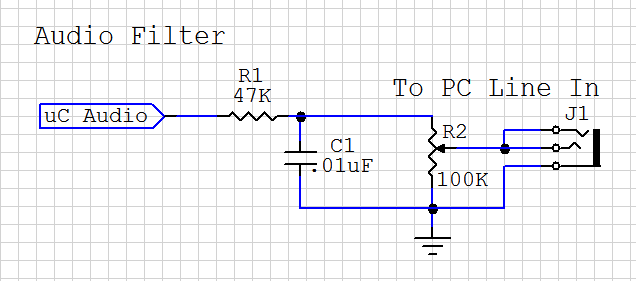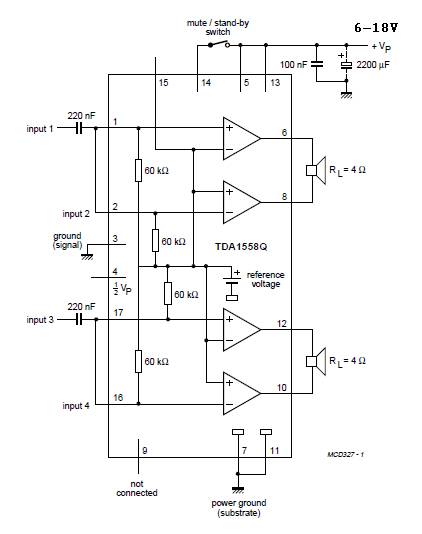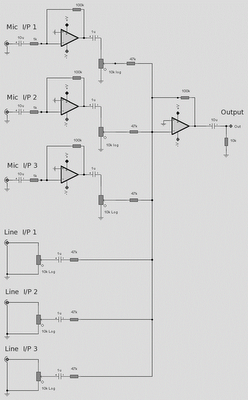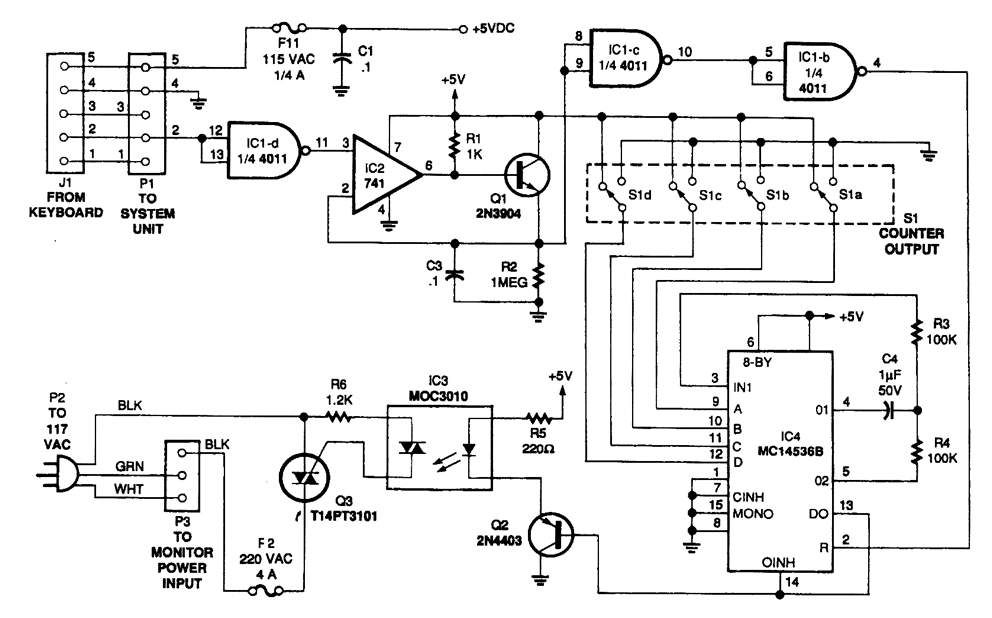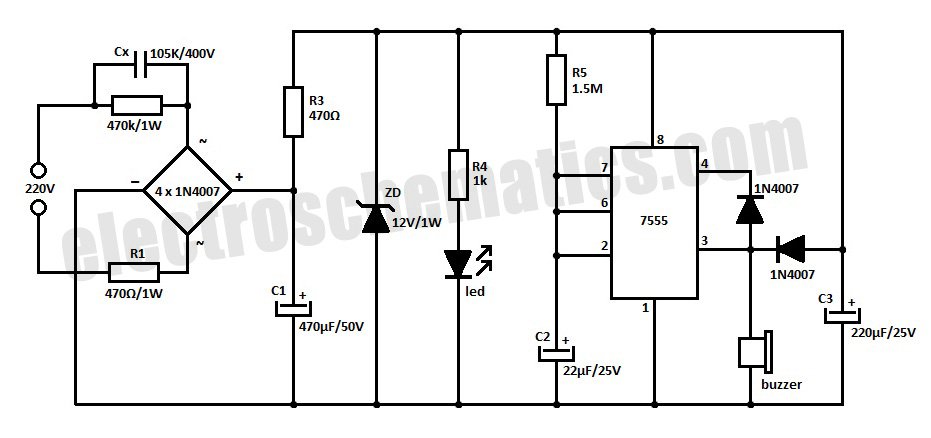
A Low Power Wireless Audio Power Amplifier
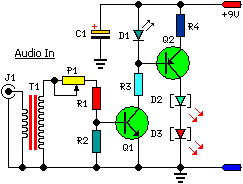
A battery-powered portable unit suitable for all types of televisions. This low-cost project allows audio reproduction from a TV without disturbing others.
This battery-powered portable audio unit is designed to provide a convenient solution for reproducing television audio discreetly. The unit operates on a battery power source, enhancing its portability and allowing use in various locations without the need for a wall outlet. It can be connected to any type of television, making it versatile across different models and brands.
The core functionality of this project revolves around capturing the audio output from the television. This is typically achieved through a set of audio input connections, such as RCA jacks or a 3.5mm audio jack, depending on the television model. The audio signal is then processed by an amplifier circuit, which boosts the signal strength to drive headphones or external speakers effectively.
To ensure minimal interference and optimal sound quality, the circuit may incorporate filtering components that reduce noise and enhance audio clarity. Additionally, the use of a low-power audio amplifier chip can extend battery life while providing sufficient sound output.
The design should also include a user-friendly interface, such as volume control knobs or buttons, allowing users to adjust the audio levels according to their preferences. An LED indicator can be integrated to display the power status of the unit, ensuring users are aware of battery levels.
Overall, this project not only serves the purpose of audio reproduction but also emphasizes user convenience and portability, making it an excellent choice for individuals seeking a low-cost solution to enjoy television audio without disturbing others.Battery-Powered portable unit, Suitable for all type Televisions Using this low-cost project one can reproduce audio from TV without disturbing others. It.. 🔗 External reference
This battery-powered portable audio unit is designed to provide a convenient solution for reproducing television audio discreetly. The unit operates on a battery power source, enhancing its portability and allowing use in various locations without the need for a wall outlet. It can be connected to any type of television, making it versatile across different models and brands.
The core functionality of this project revolves around capturing the audio output from the television. This is typically achieved through a set of audio input connections, such as RCA jacks or a 3.5mm audio jack, depending on the television model. The audio signal is then processed by an amplifier circuit, which boosts the signal strength to drive headphones or external speakers effectively.
To ensure minimal interference and optimal sound quality, the circuit may incorporate filtering components that reduce noise and enhance audio clarity. Additionally, the use of a low-power audio amplifier chip can extend battery life while providing sufficient sound output.
The design should also include a user-friendly interface, such as volume control knobs or buttons, allowing users to adjust the audio levels according to their preferences. An LED indicator can be integrated to display the power status of the unit, ensuring users are aware of battery levels.
Overall, this project not only serves the purpose of audio reproduction but also emphasizes user convenience and portability, making it an excellent choice for individuals seeking a low-cost solution to enjoy television audio without disturbing others.Battery-Powered portable unit, Suitable for all type Televisions Using this low-cost project one can reproduce audio from TV without disturbing others. It.. 🔗 External reference
Warning: include(partials/cookie-banner.php): Failed to open stream: Permission denied in /var/www/html/nextgr/view-circuit.php on line 713
Warning: include(): Failed opening 'partials/cookie-banner.php' for inclusion (include_path='.:/usr/share/php') in /var/www/html/nextgr/view-circuit.php on line 713
